Our integration with Microsoft Dynamics allows you to auto-sync contact and lead data into Constant Contact to save you time and send more targeted emails. There are two methods available for import: by Contacts List or Leads List.
The sync is one-way, and data isn't sent back into your Microsoft Dynamics account.
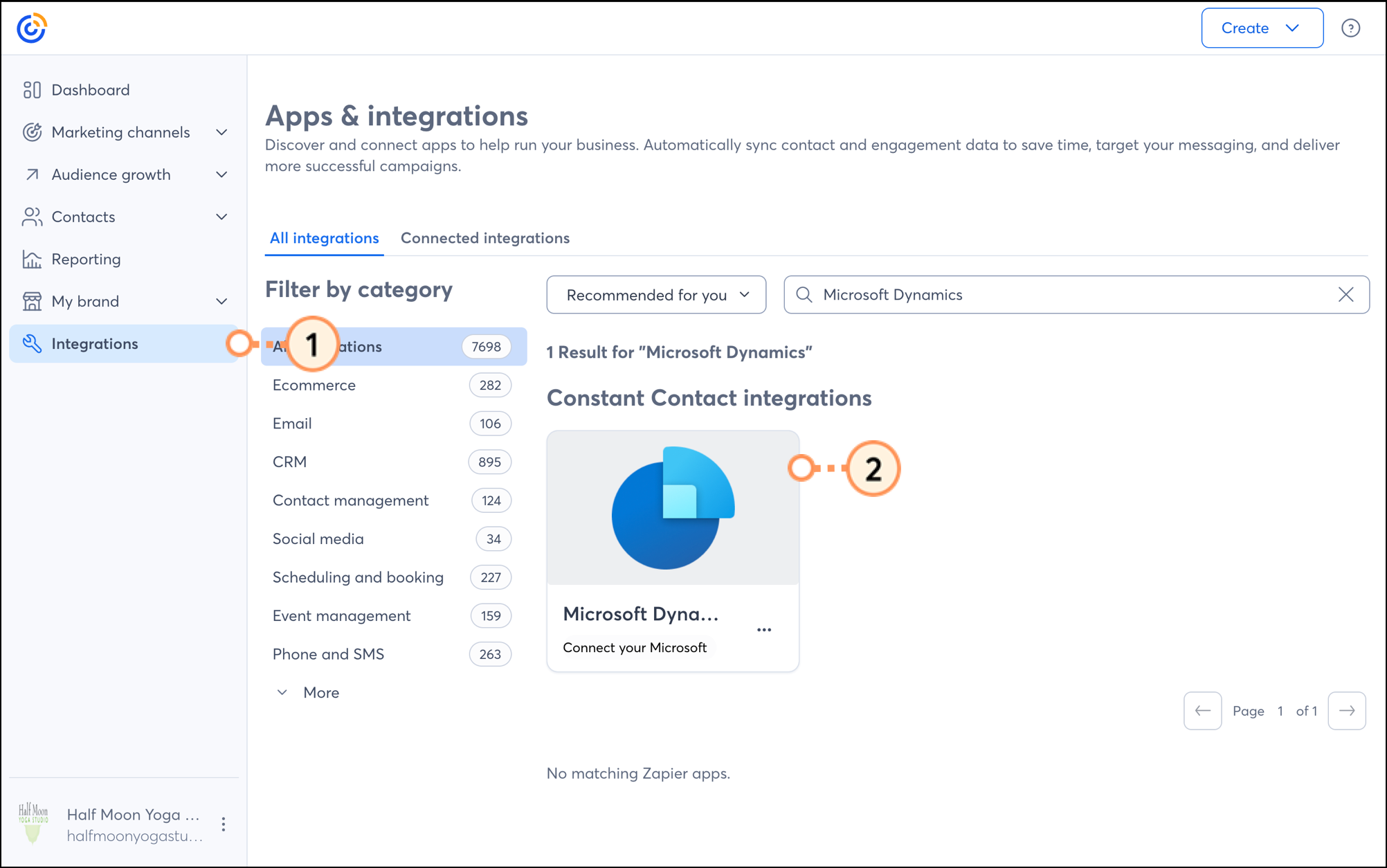
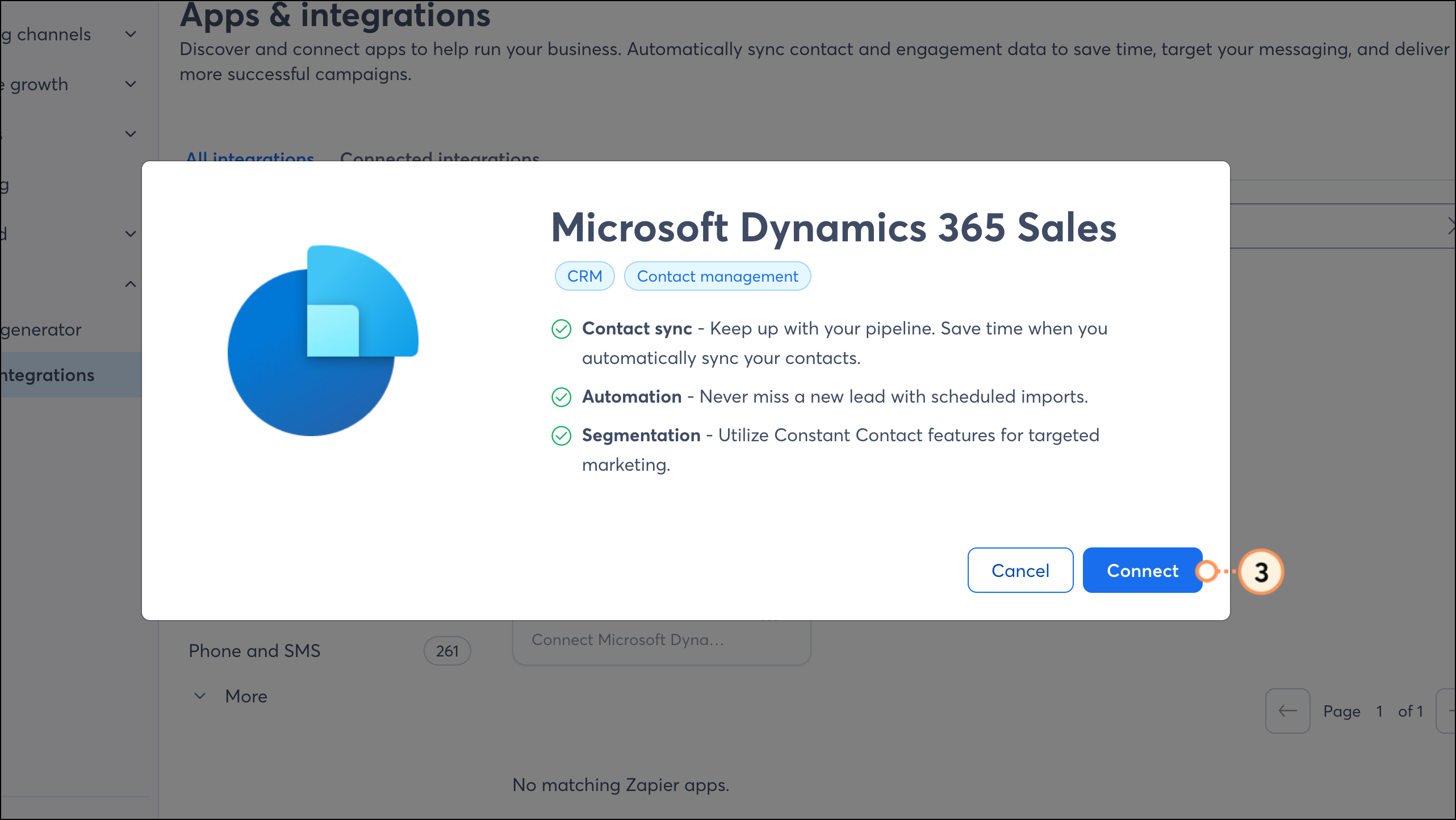
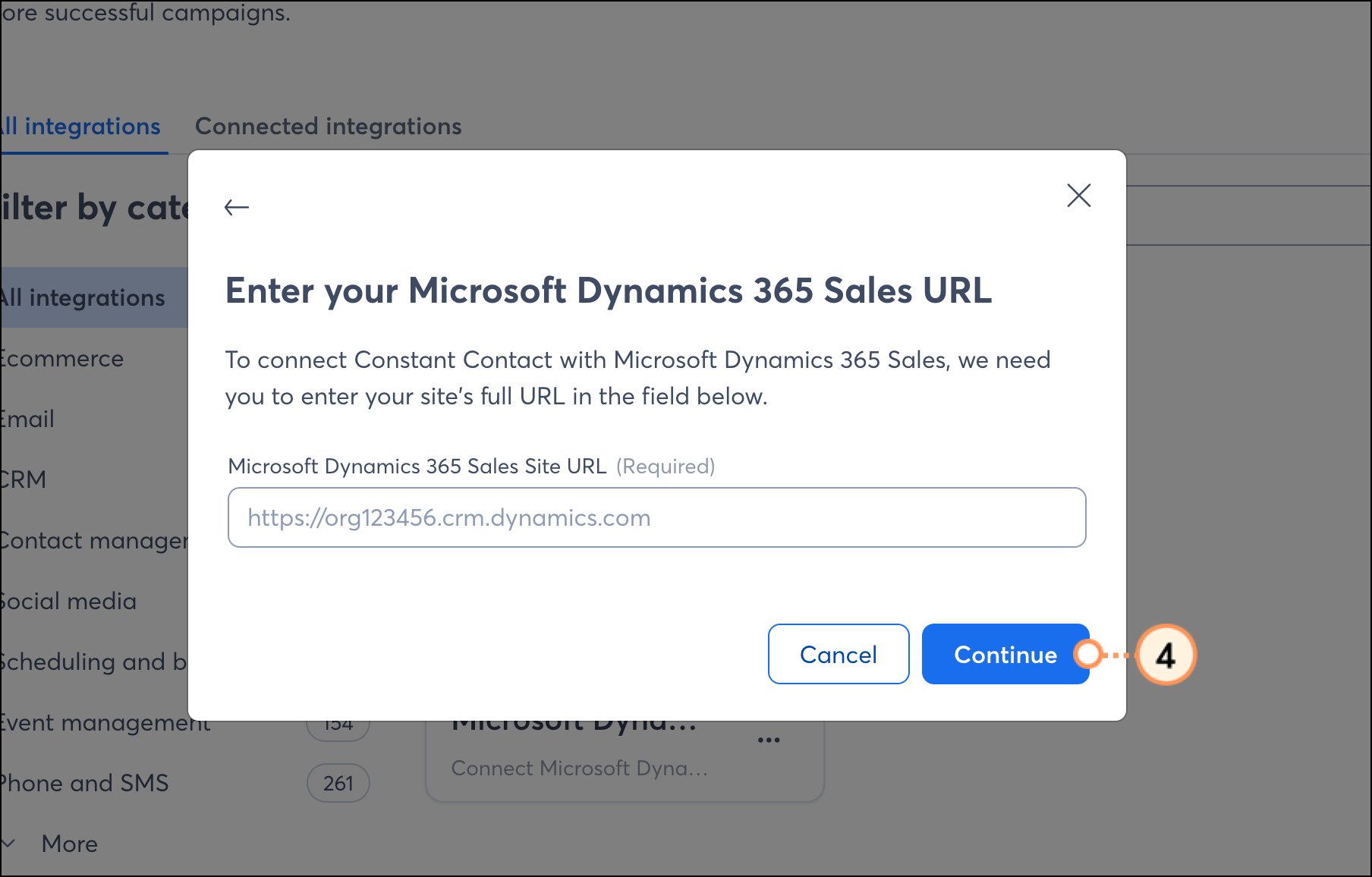
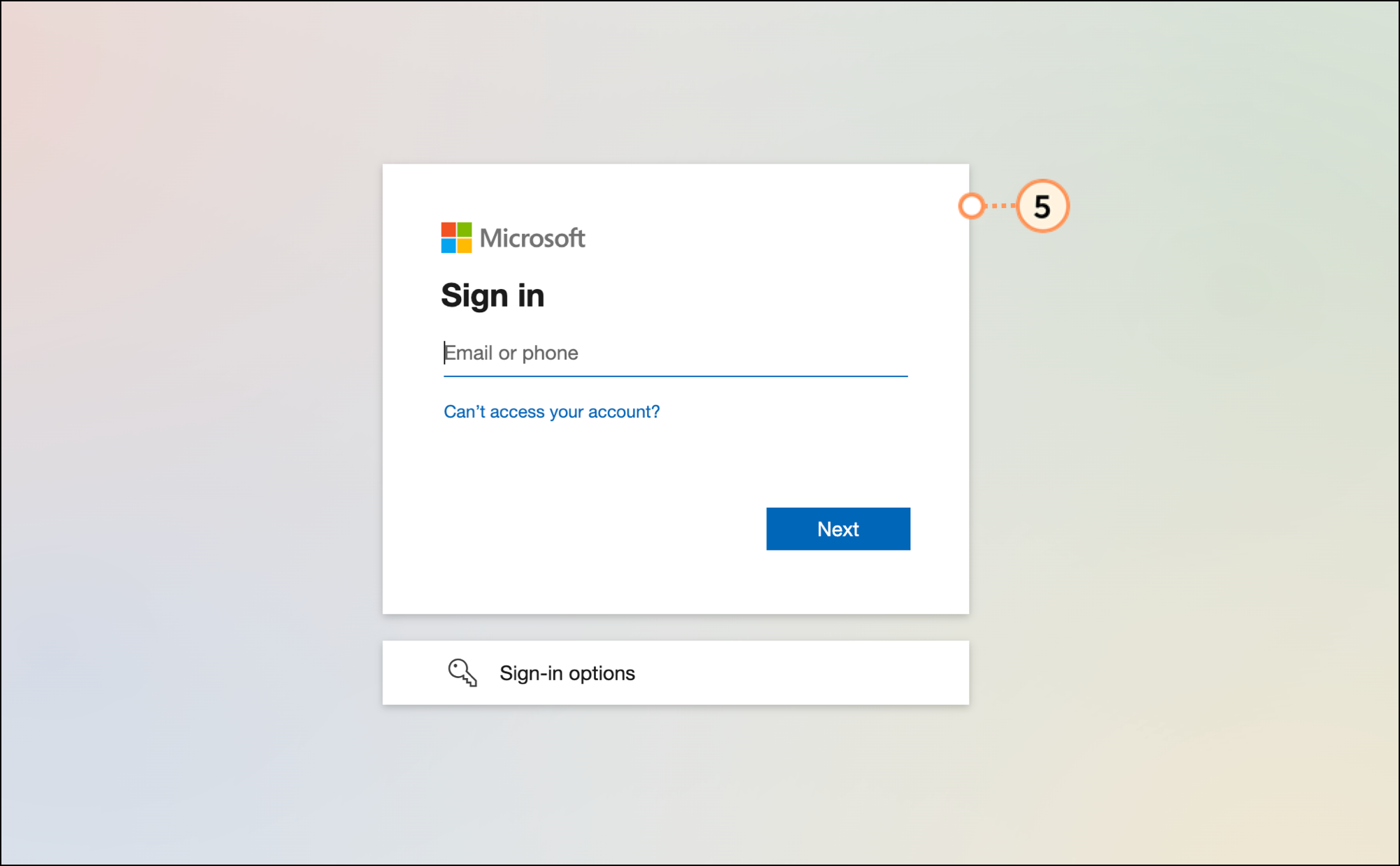
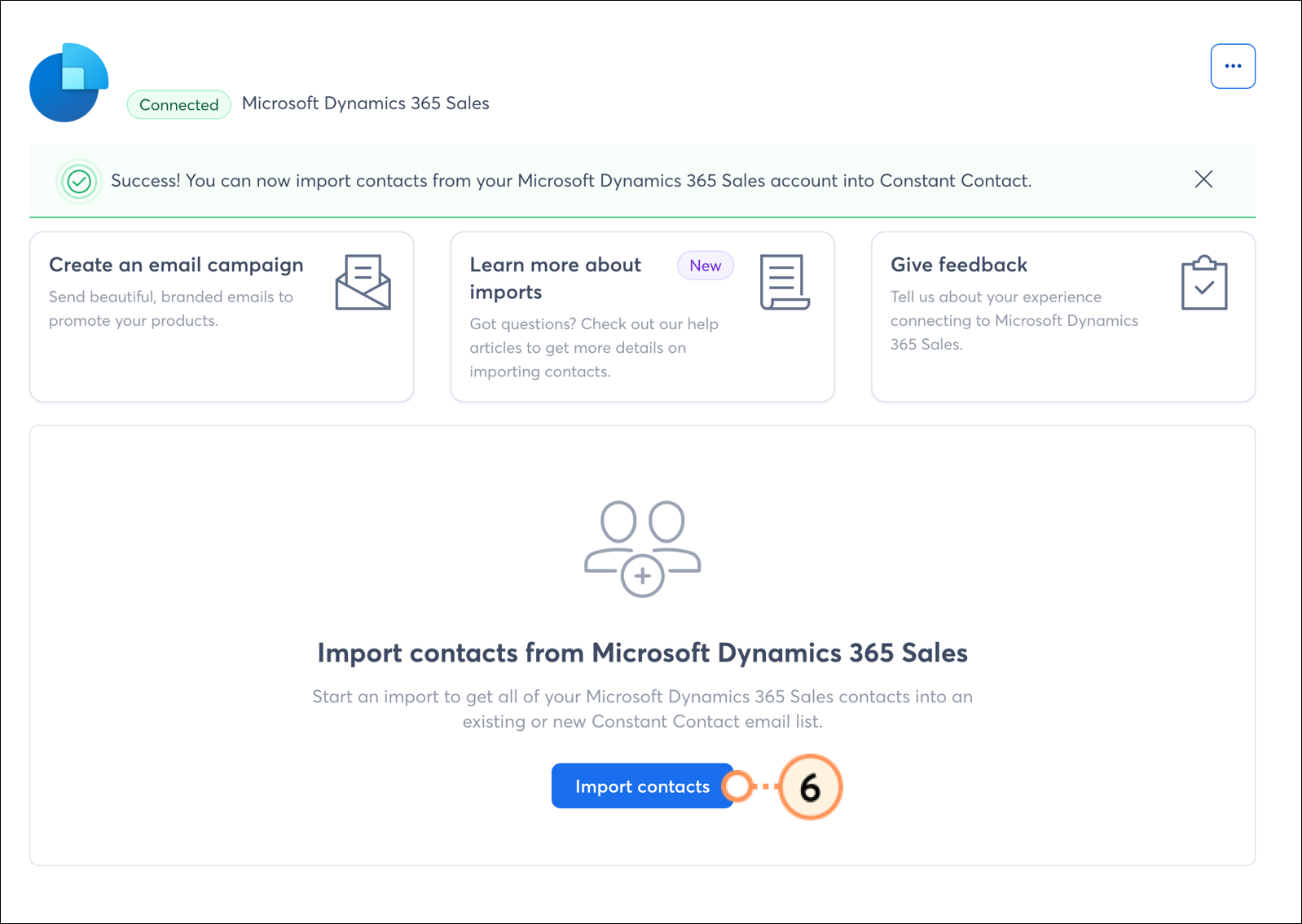
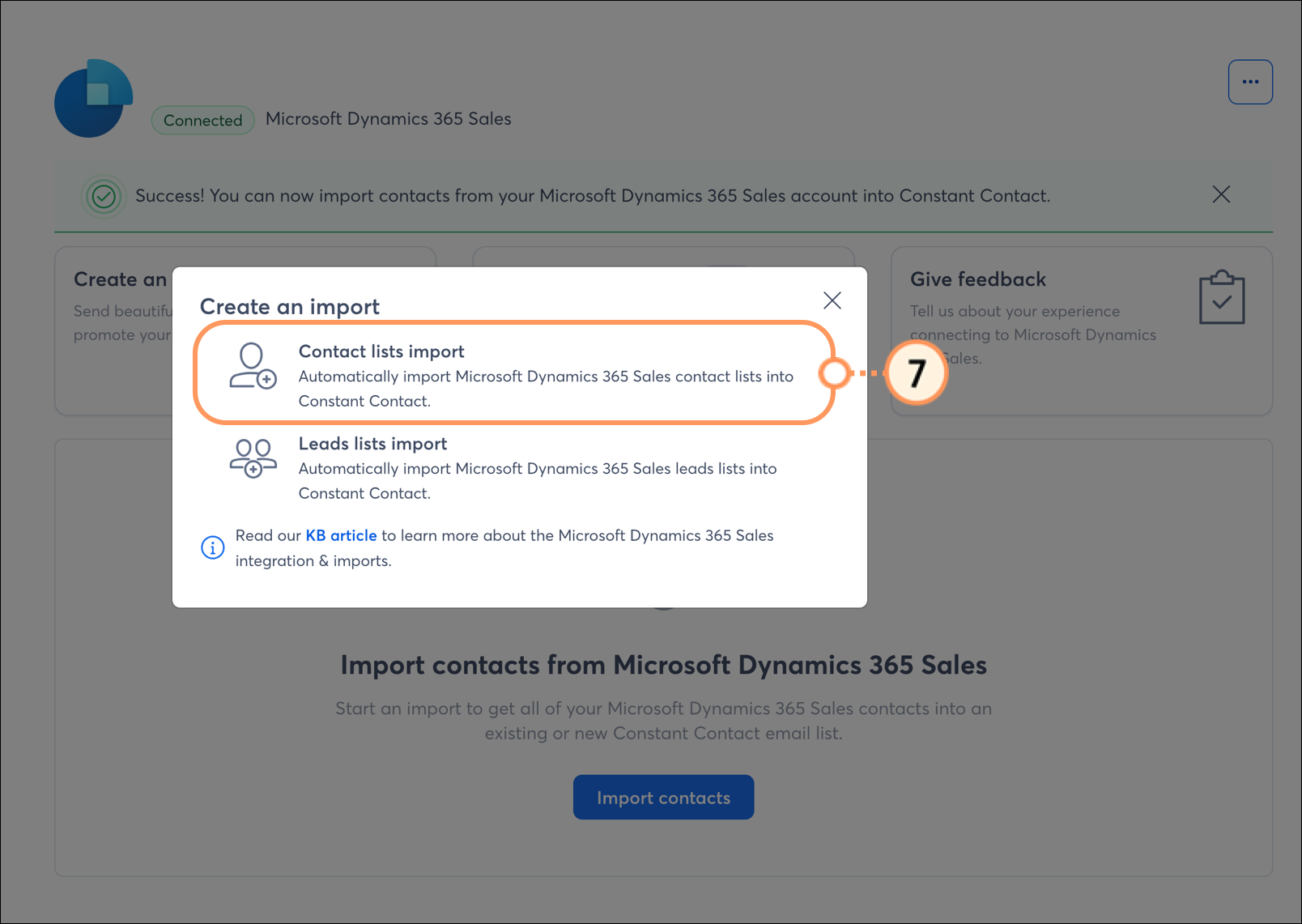
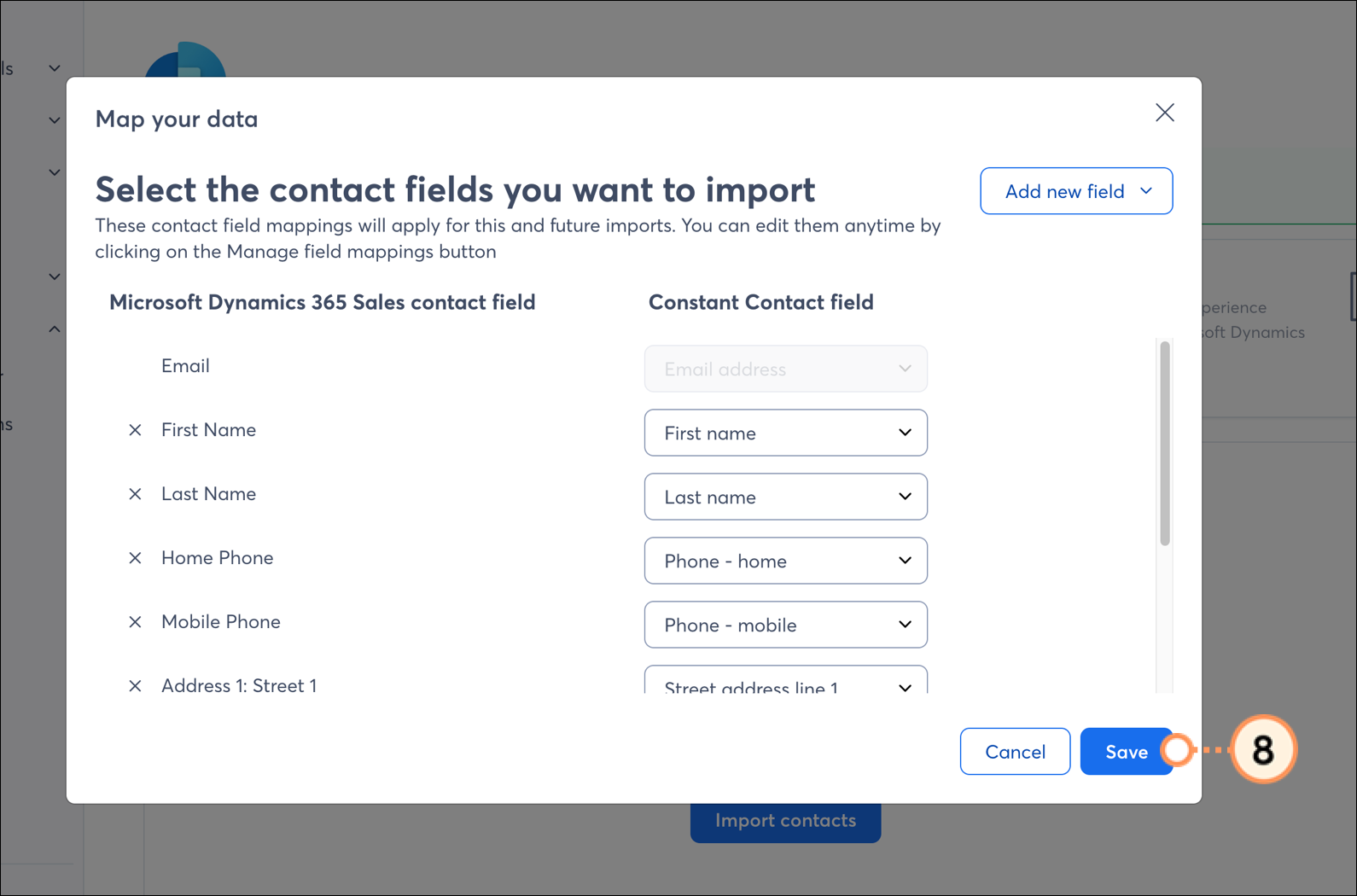
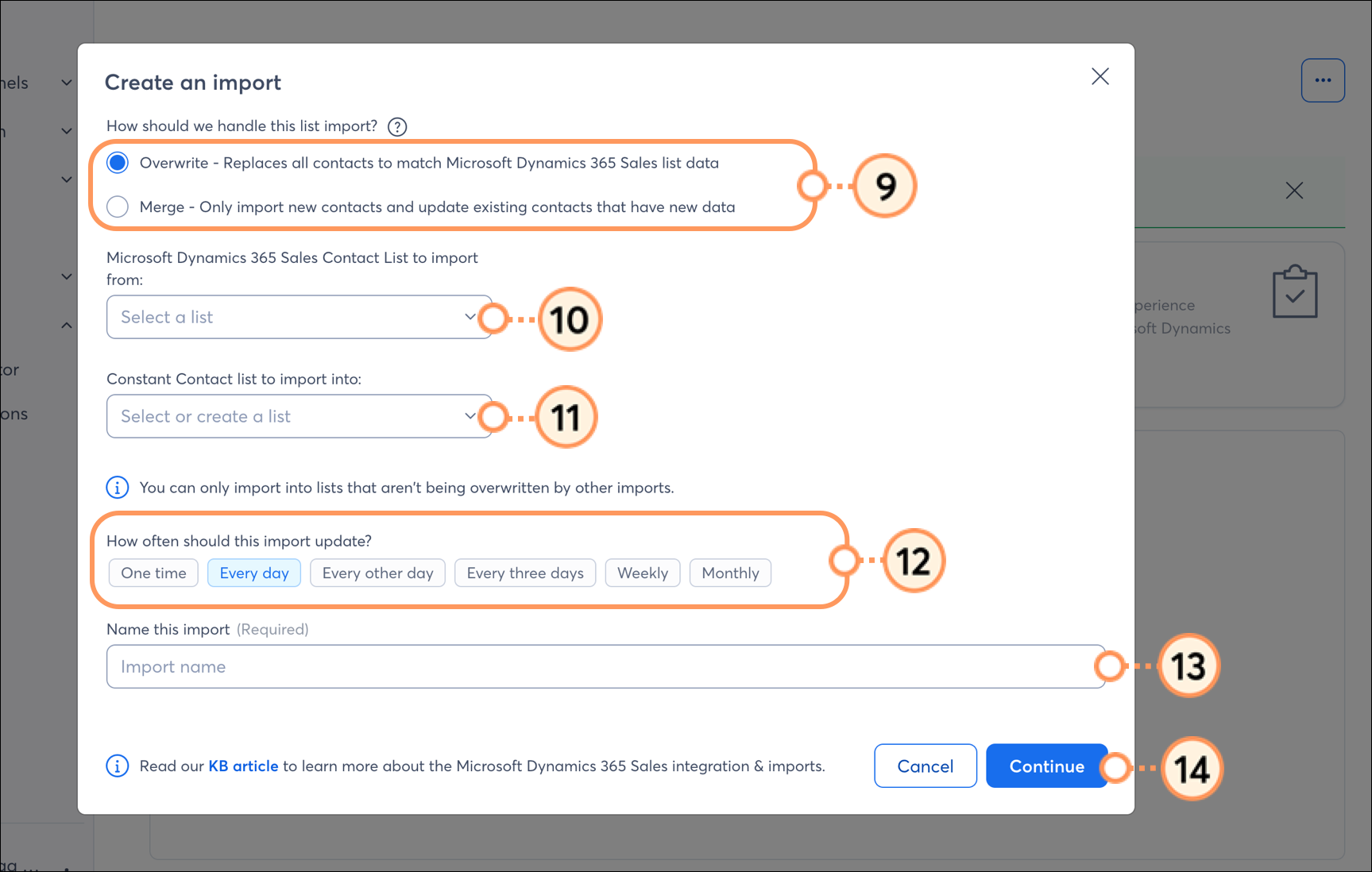
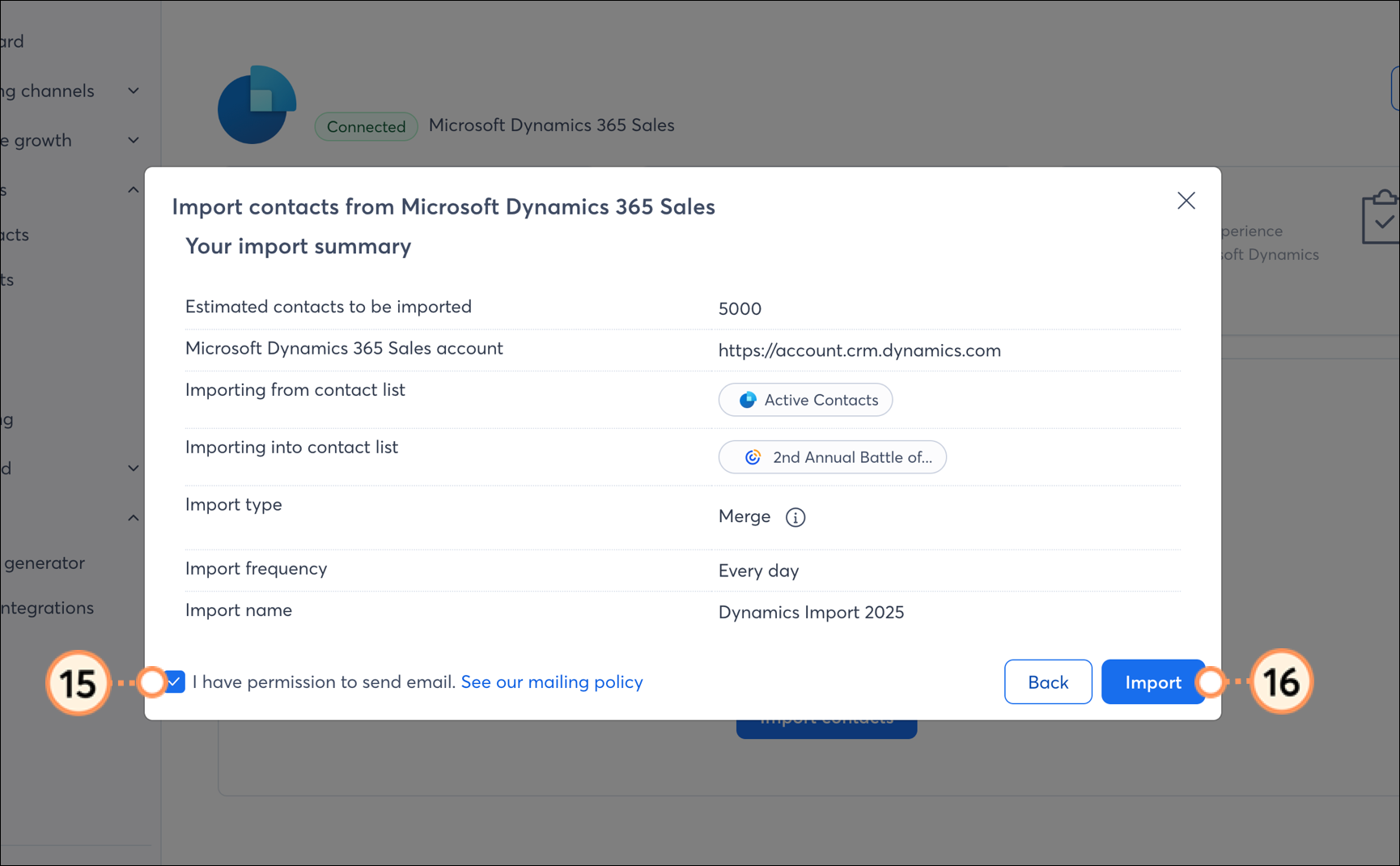
You can have multiple scheduled imports. If necessary, to create additional imports and segment your contacts, repeat steps 6 to 16.
You'll then be brought to your Microsoft Dynamics integration dashboard, where you can see a list of all your imports, along with the status and details of each. When you create a new import, it will initially be listed in an In Process status.
Once the import is complete, the status will update to Success.
Note: If you see the import status, Success, but you do not have all of your newly imported contacts, please wait another 5 minutes and then refresh the page to see if your import has fully finished processing. Check the list you selected during the import process to see if your contacts have been added to it.

Note: To build a campaign targeting contacts or leads in Microsoft Dynamics, you must have at least one contact in the Contacts or the Leads area.
When you import contacts, you're asked to select a Constant Contact list to import them into. After the import is complete, go to the list you've selected to view your newly imported contacts.
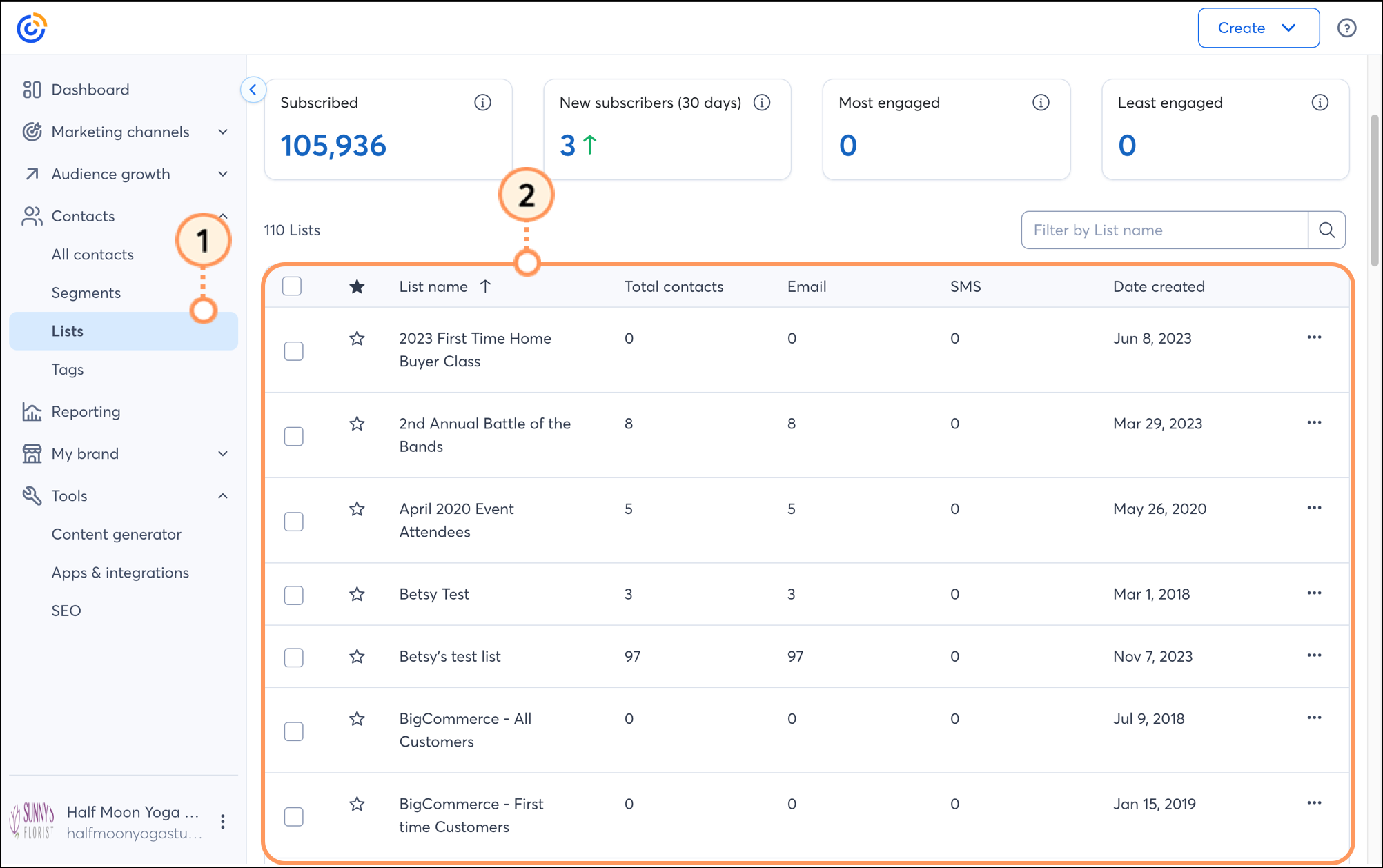
Click the list to view and manage your imported contacts.
To locate the URL needed to connect your Microsoft Dynamics account with Constant Contact, complete the following steps:
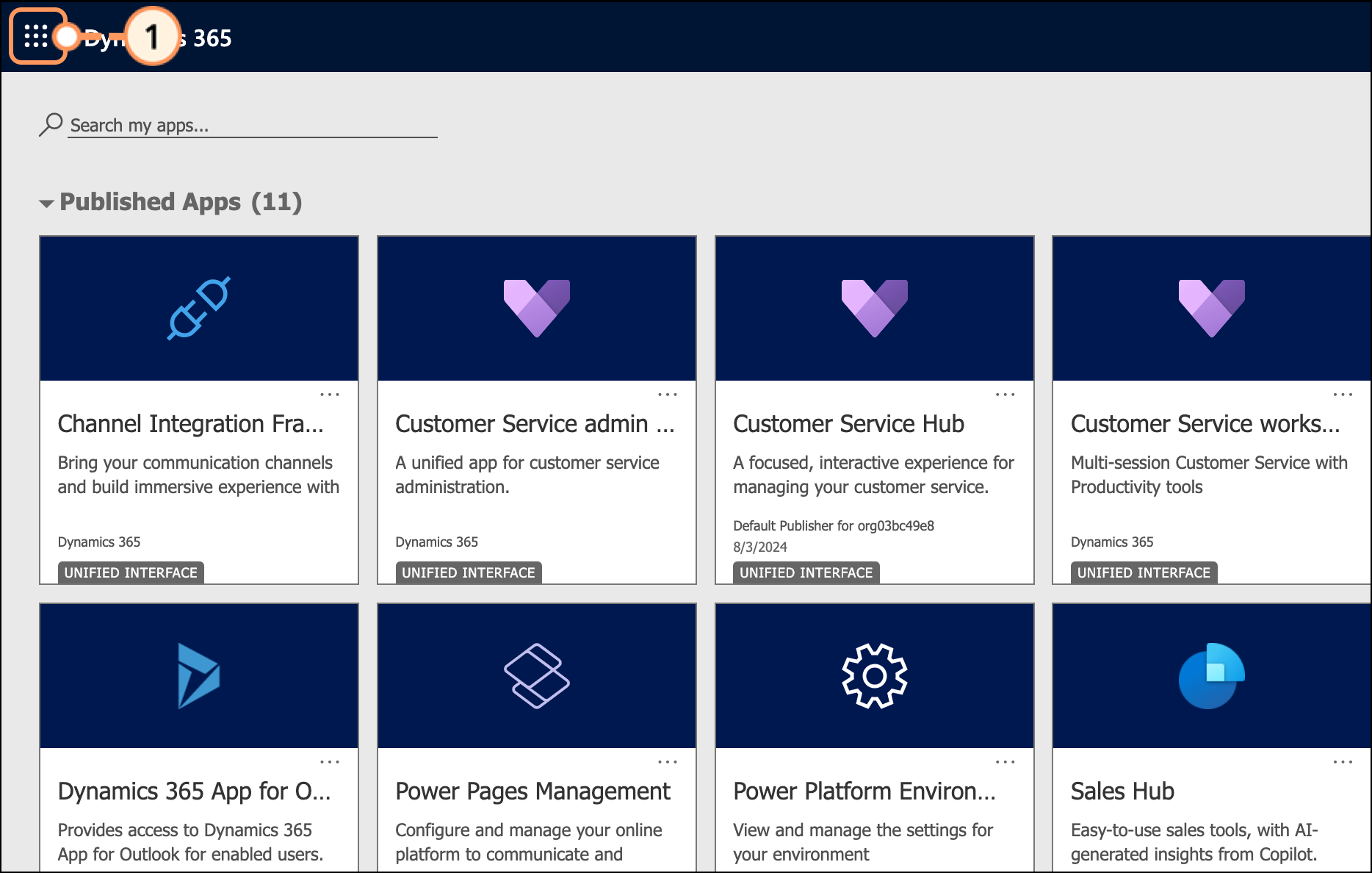
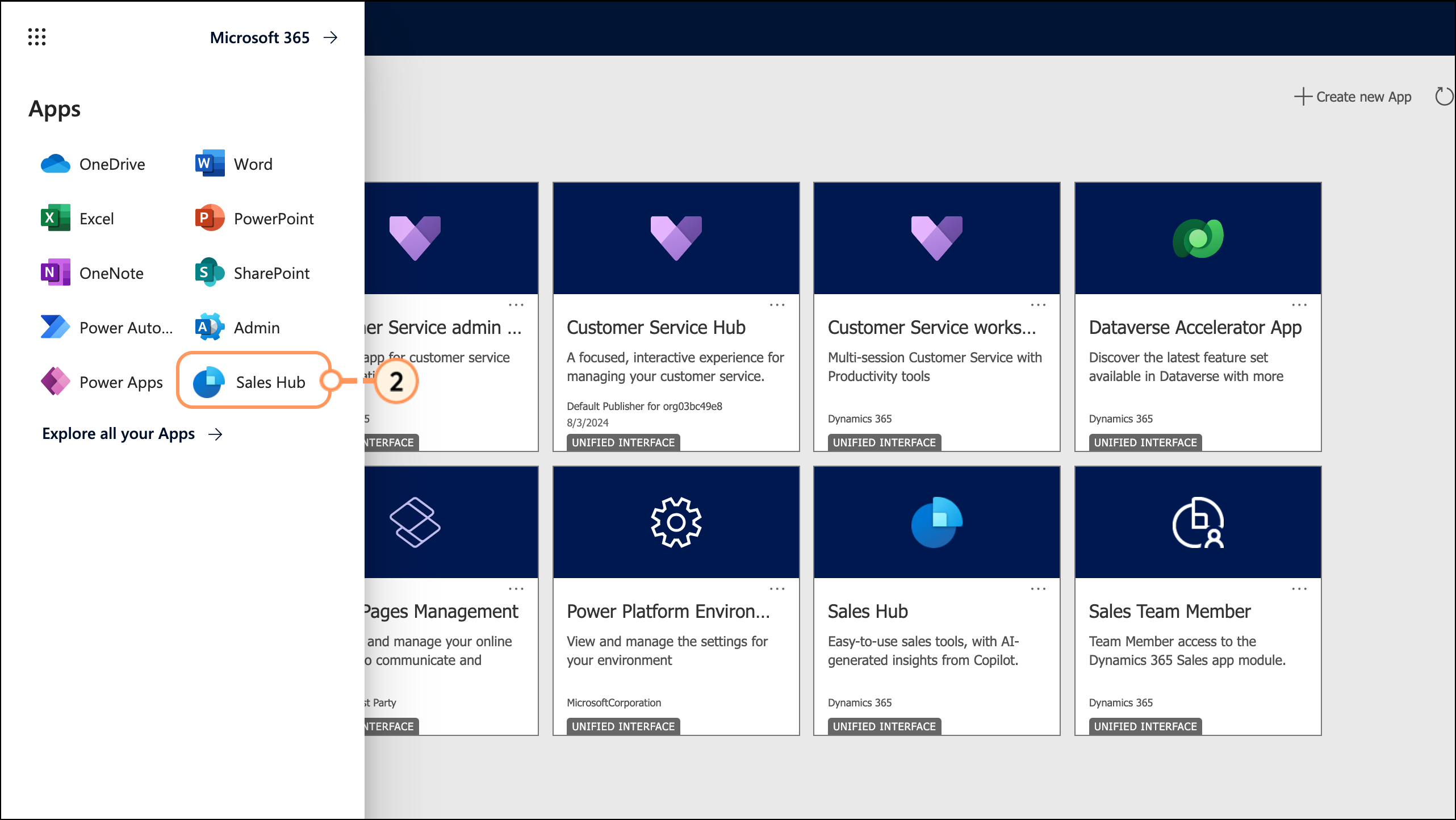

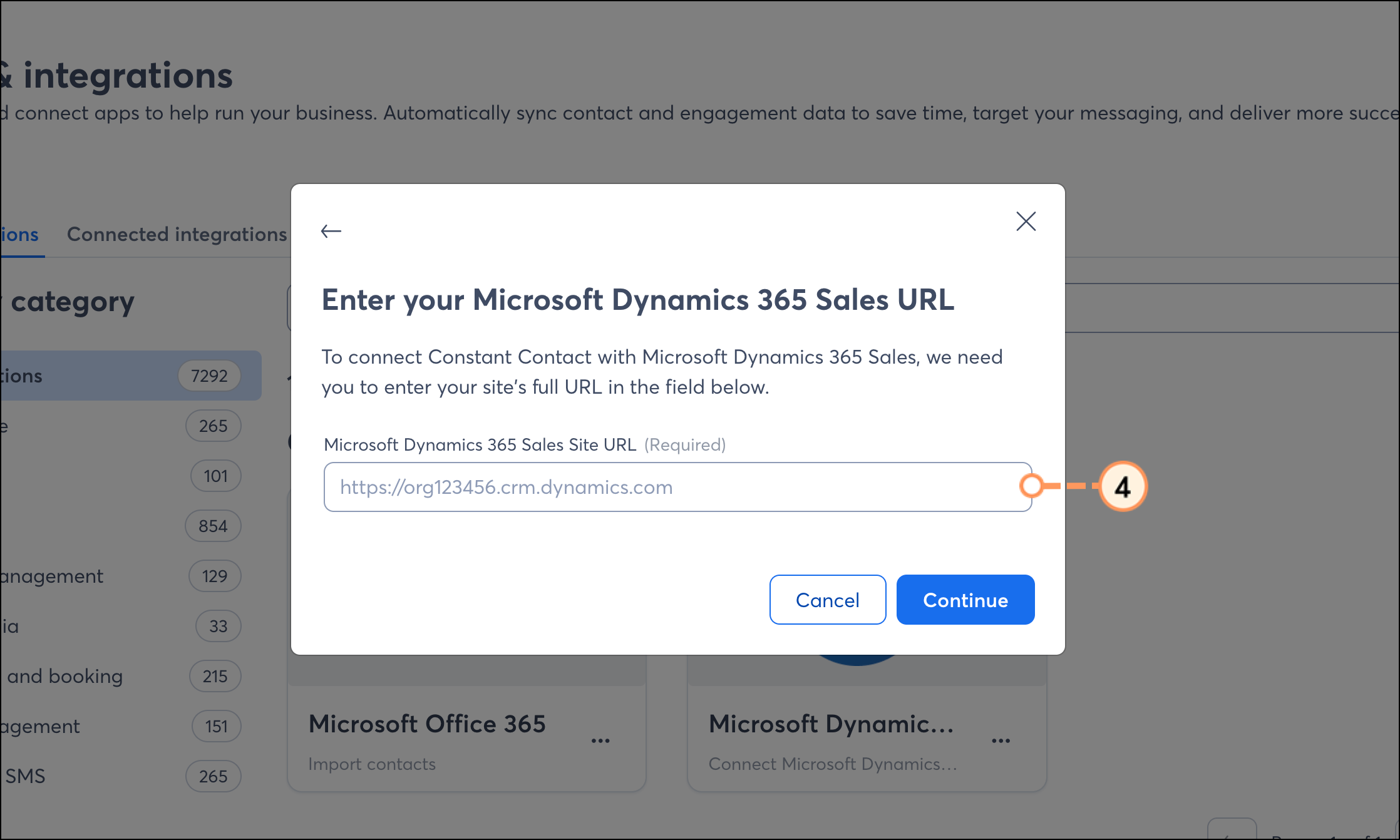
Once you’ve set up your imports and your Microsoft Dynamics contacts are syncing into Constant Contact, there are many ways to send personalized messages to those contacts.
When importing from Microsoft Dynamics, you have the flexibility to choose which contact or lead list you'd like to sync into a Constant Contact list. But maybe you want to segment these contacts even further, to send specific, targeted messaging. You can do so by creating a custom segment of contacts.
Create personalized automated communications via email and SMS for your customers based on their actions, including welcome emails, thank you series, requests for review, and more.
Any links we provide from non-Constant Contact sites or information about non-Constant Contact products or services are provided as a courtesy and should not be construed as an endorsement by Constant Contact.
If you want to disconnect your Microsoft Dynamics Integration, do the following:
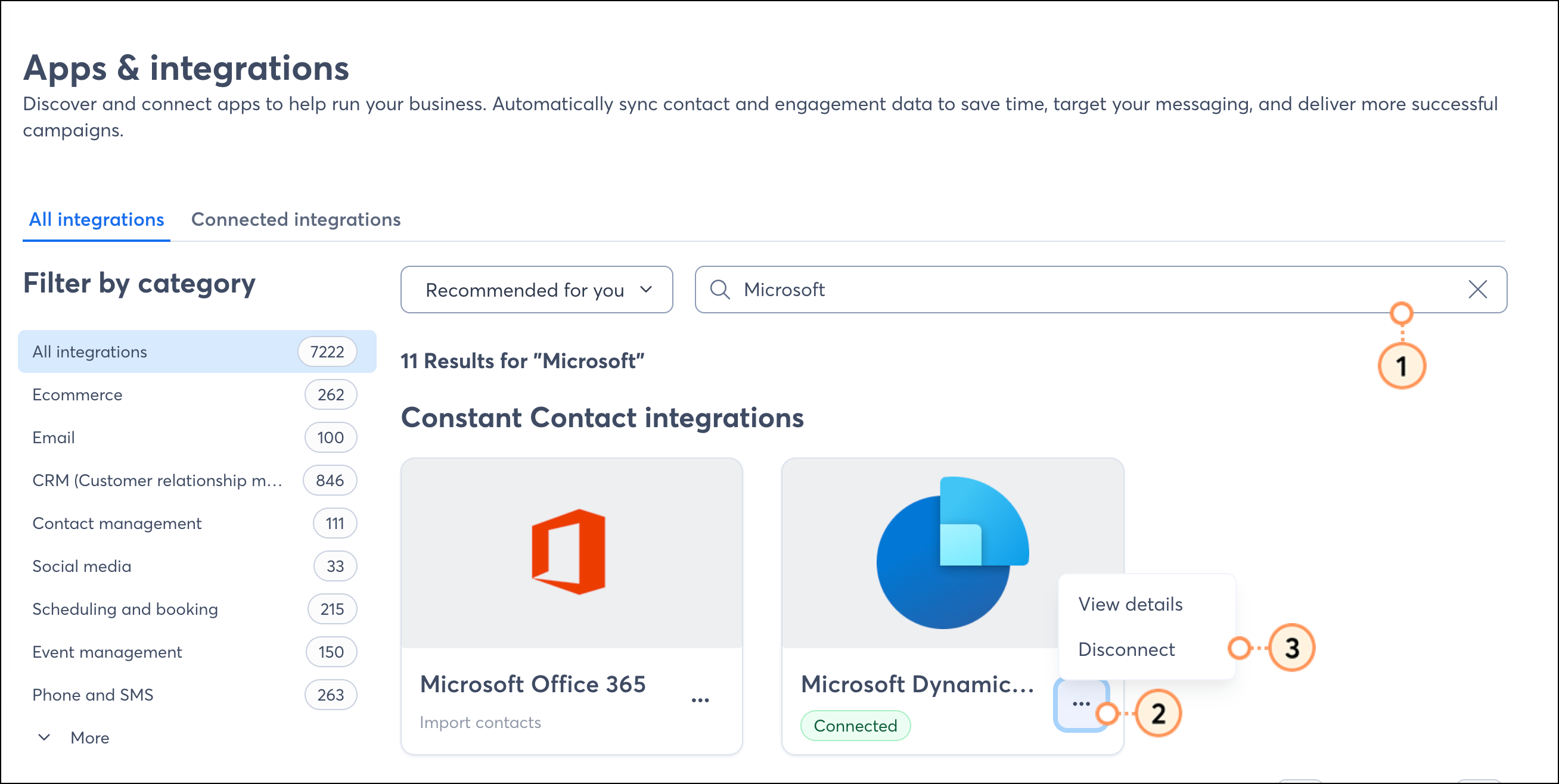
After disconnecting the integration, your Microsoft Dynamics 365 Sales contacts will no longer sync to Constant Contact. Any contacts that have already been synced and added to your Constant Contact account will remain. Disconnecting the Microsoft Dynamics integration does not delete previously imported contacts.
Copyright © 2025 · All Rights Reserved · Constant Contact · Privacy Center